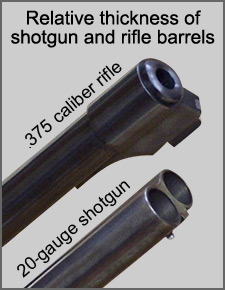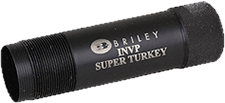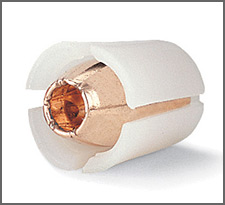- 01: Introduction
- 02: History
- 03: Propellants, Firearms, and Ammunition Development
- 04: Modern Firearms Manufacture
- 05: Small Arms Ammunition
- 06: Evidence Handling Procedures
- 07: Equipment and Instrumentation
- 08: Examination of Firearms
- 09: Cartridge and Shotshell Examination
- 10: Characterization and Evaluation of Fired Projectiles
- 11: Bullet Comparison and Identification
- 12: Gunshot Residue and Distance Determination
- 13: Toolmark Identification
- 14: Communicating Results
- Resources


Barrels for Muzzleloading Arms
Home > Modern Firearms Manufacture > Rifled Barrels > Barrels for Muzzleloading Arms
Producing a rifled barrel for a muzzleloading rifle or handgun is similar to producing a barrel destined for a cartridge firearm. Both require spiral lands and grooves. The major difference in muzzleloader barrels is in rifling configuration, not process.

Shotgun
Unlike many rifles and handguns, shotguns are not considered point target firearms. Accuracy takes second place to the barrel’s ability to produce a pattern of metal pellets at the target. With relatively large bore diameters, shotgun barrels must be made with thin walls to reduce weight and bulk.
Today, the majority of shotgun barrels are hammer forged. The difference in the process is the lack of inverse rifling on the mandrel. Mandrel forming makes a straight, smooth, and uniform tube.
Shotgun chambers do not displace much barrel steel compared to a rifle chambered for a bottleneck cartridge, such as the 30-06 Springfield. It is simple to include the rough chamber on the mandrel.

Screw-in choke tube
Sporting shotguns are choke-bored arms which makes them ideal for hammer forging. There is a slight constriction in the final inch of the barrel that controls how fast the pellet pattern spreads. For long-range shooting, a tighter constriction is required than for short-range skeet shooting or hunting fast-rising upland birds.
Before hammer forging, choke boring required that the entire barrel be made to the choke diameter. All but the last inch must be enlarged to meet the main diameter specification, which is a tedious and expensive operation. Some chokes were cold swaged by placing a tapered die on the outside of the muzzle and pressing it down to taper both the inner and outer surfaces of the barrel. This seldom resulted in a uniform choke.

Projectile with polymer sabot
Hammer forging allows the choke portion of a shotgun barrel to be formed by leaving the muzzle end of the mandrel slightly smaller. In modern choked barrels, the trend is to use threaded interchangeable chokes.
Thin-walled shotgun barrels do not lend themselves to cut rifling; many rifled shotguns today have a shallow polygonal rifling pattern that is easily accomplished by adding the twisted pattern to the mandrel. Modern rifled shotgun barrels are primarily intended for firing subcaliber projectiles fitted with a polymer driving shoe or sabot. Therefore, the rifling pattern requires only enough “bite” to grip and spin a polymer sabot.




